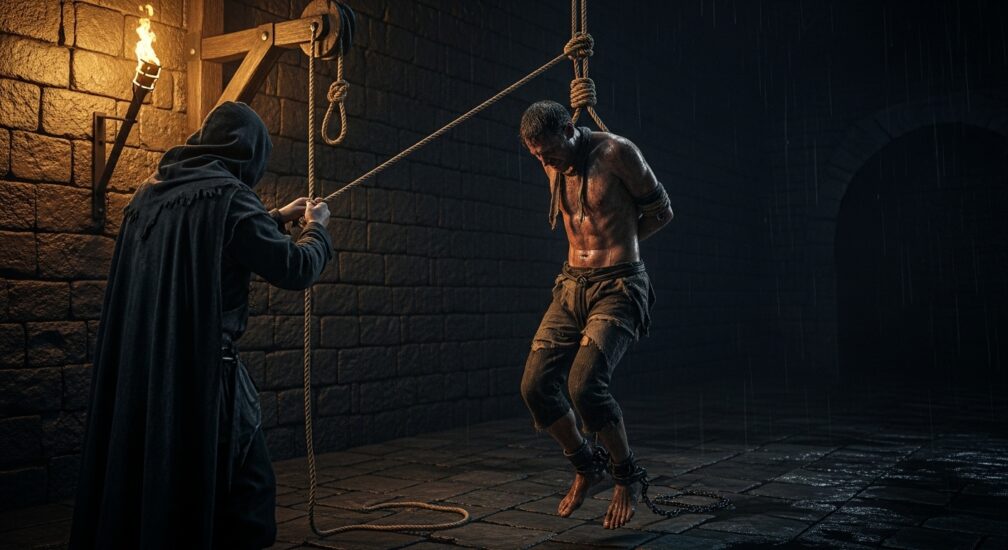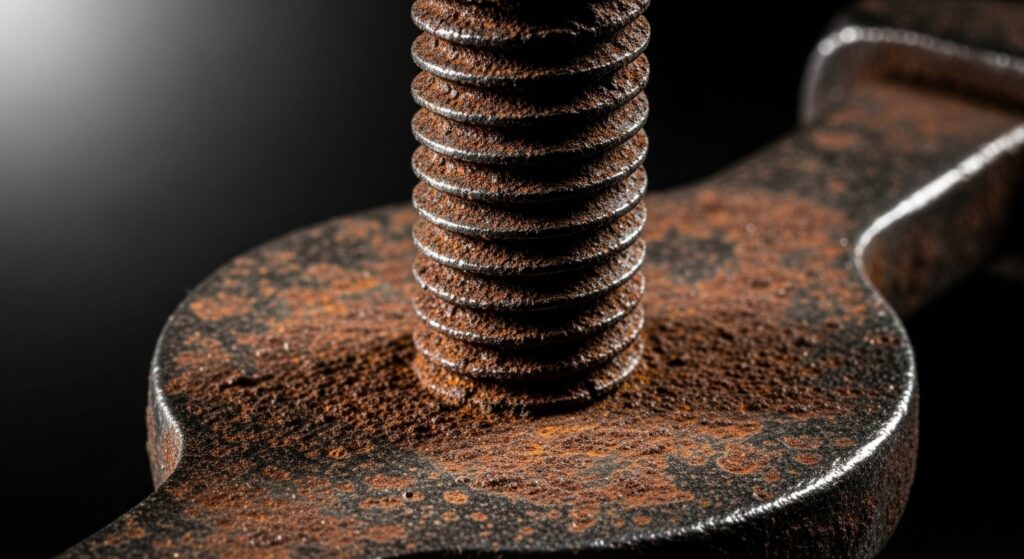What Is a Strappado?
To understand the strappado meaning, one must picture a body suspended in prayer-like agony. The victim’s hands were bound behind their back and attached to a rope passing over a beam. When pulled upward, the arms twisted unnaturally, the shoulders dislocating under their own weight. That is what is a strappado—a cruel balance between restraint and suffering, designed to inflict both physical and spiritual terror.
Unlike other medieval punishments, this strappado torture method was deceptively simple. It left few marks but caused immense internal damage, aligning perfectly with the era’s obsession with confession through pain. To the authorities who wielded it, the device symbolized divine judgment—a way to draw truth from sin and purify the soul through suffering.
The Strappado and the Spanish Inquisition
During the strappado Spanish Inquisition, the device became both a weapon and a ritual. In the dark halls of confession chambers, inquisitors invoked faith to justify agony. The strappado inquisition blended the theology of salvation with the mechanics of punishment: each pull of the rope was framed as an act of penance, each cry of pain as a step toward absolution.
The Church’s defenders claimed that such suffering revealed the sincerity of repentance. Yet, beneath the pious rhetoric lay a system of control. The strappado torture method enforced obedience not through reason but through dread—the body’s collapse serving as proof of the spirit’s submission.
Here, sin, repentance, and salvation became tools of domination. The devout and the accused alike were reminded that in the name of faith, even agony could be sanctified.
The Torture Method and Its Technique
The strappado technique was cruel in its precision. Victims were hoisted by ropes tied behind their backs until their feet barely touched the ground—or hung freely, depending on the severity. A sudden drop, known as a “jerk,” could tear muscles and sever tendons. Weights added to the feet deepened the torment, turning the act into a slow disintegration of endurance.
As a form of strappado medieval torture, it appeared in inquisitorial courts, military prisons, and secular trials alike. Sometimes, after suspension, the victim received lashes or beatings, known as strappado caning, compounding pain with humiliation.
The strappado punishment was not designed to kill but to break resistance—an ordeal where the threshold of faith and fear blurred. In surviving records, the silence after confession was often described as the moment when judgment replaced mercy, and human endurance gave way to divine will.
Faith, Fear, and Control
The strappado really shows you what medieval religious thinking was like. It mixed belief and craziness, devotion and control. People justified torture as a way to save souls – to get sinners to repent, to turn pain into a lesson.
This way of thinking made extreme enthusiasm a good thing. Inquisitors were like priests and executioners at the same time, thinking they were helping people get to heaven. Victims, hanging between life and death, showed how messed up devotion could get when people were being oppressed – they were trying to find grace while being damned.
The strappado turned the search for truth into a show of submission. It proved that belief, when used as a weapon, could turn faith into a tool of fear and obedience.
The Strappado’s Legacy in History
Though centuries have passed, the echo of the strappado lingers in Europe’s moral memory. Its simplicity made it enduring, its symbolism unforgettable. Reconstructions and replicas today reveal more than a device—they expose the human capacity to sanctify suffering.
At the Medieval Torture Museum in Chicago, visitors can witness how instruments of religious punishment once intertwined faith and cruelty, reflecting the fanaticism of the age. The Medieval Torture Museum in Los Angeles delves deeper into the moral boundaries of such tools, exploring how societies blurred justice with devotion.
Meanwhile, the Medieval Torture Museum in St Augustine preserves relics of confession and control, reminding us that torture was not only physical but ideological—a means of governing the soul through penance and fear.
For readers interested in exploring the interplay between faith, morality, and human endurance, the museum’s blog offers further reflections on the paradoxes of punishment and belief.
Between Heaven and Hell: A Moral Reflection
The strappado wasn’t just a way to torture someone; it was like a twisted conversation between the powerful and those who believed. Hanging there in pain, people felt caught between the hope of going to heaven and the present hell they were actually in.
This thing shows how humans at their worst tried to mix saving souls with control. The inquisitors thought they were doing the right thing, but looking back, they were just oppressors hiding behind religion. The strappado shows us that when belief loses its heart, it turns mean.
Now, it’s a reminder of what can go wrong. Looking at these old tools, we don’t just see how awful things were back then but also how easily beliefs can be twisted. Stuck between the rope and the idea of being saved, between not talking and confessing, the strappado is still a symbol of the never-ending fight between faith and power.






